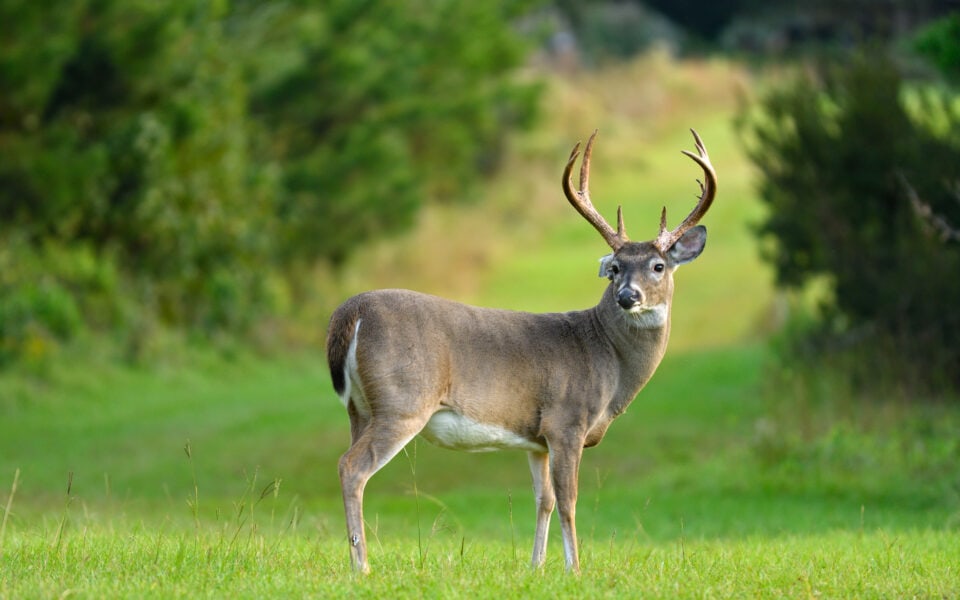It seems that too many hunters have developed unrealistic expectations for the whitetail woods. I blame myself, the rest of the hunting industry, the internet and outdoor programming for making it this way. People watch hunting shows on TV or online and think they should have the same success as the outdoor stars they see in videos. Are these improbable outlooks? Is it even possible for “Joe-hunter” to experience the same success on any property?
Isn’t it really all about what makes you, your family and friends happy? It just so happens that I am one of those nuts who likes to hunt big-antlered whitetails, but it doesn’t define my success. It seems things have gotten so serious…too serious. If you can’t duplicate what you see online or on your favorite hunting shows some believe they’ve failed. Sometimes it causes youth to lose interest, or long time hunters to give up. This is disastrous for the outdoor industry.
We may all need to “hit the reset button” on all of this “antler-mania.” The truly important things for most gamekeepers is that you do your best to oversee healthy wildlife populations and that you enjoy your property and the outdoors to the fullest.
Understanding Acreage, Density, Neighbors and Reality
Is it even possible to grow, let alone see and harvest record class whitetails every year? First, what do you consider “record class?” Since I’m a bowhunter, I originally thought of things using the Pope & Young minimum of 125 inches as my mark. I think if you do things right, your odds of hitting this benchmark are very good. Many 3-year old bucks will easily make this score – and to some, a 125-inch buck is big…but to others it is not. When some refer to “record class bucks,” they’re referring to the Boone & Crocket minimum of 170-inches. When trying to grow, or even see bucks of this size in the wild, your odds decline precipitously! Keep in mind, that 3-year old I just mentioned will increase in antler size 30 to 40-percent by the time he reaches 5-years old! However, it should be all about what makes you happy.
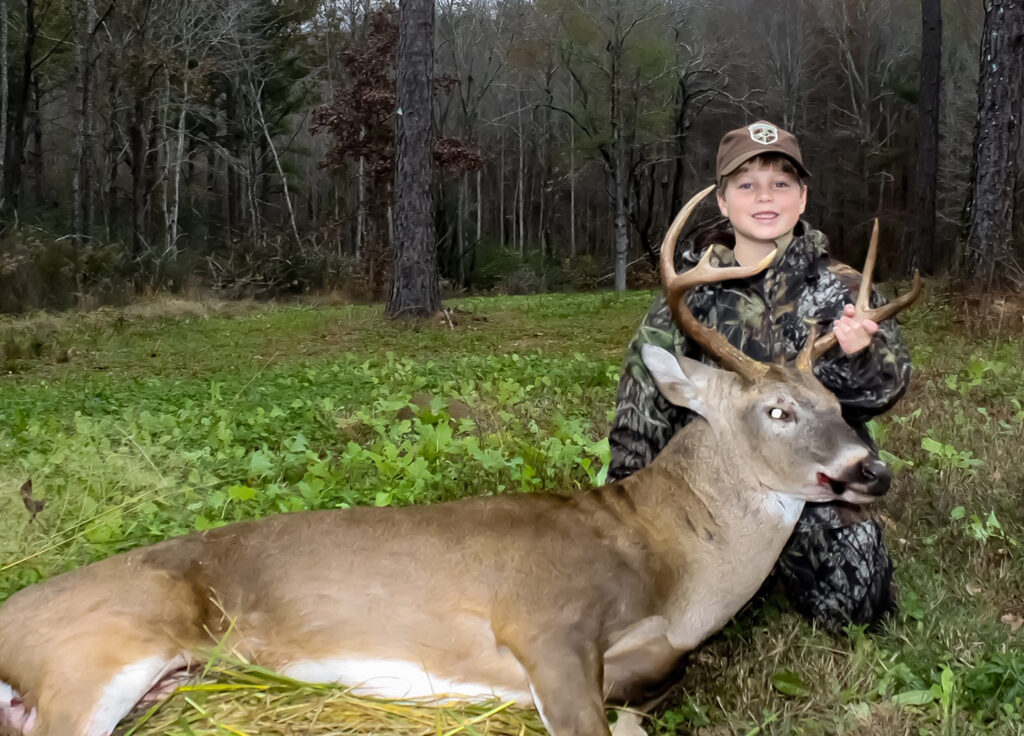
Austin Delano
How many acres does it take to consistently harvest mature bucks? Every situation is different so there is no exact answer. However, do you really think that with a small property you should have 5-year old bucks with world-class genetics running everywhere? It depends upon your neighbors, the topography of the surrounding area, the quality of your soil, and numerous other details that you may or may not have control over.
With a small property, can you influence whitetail management or make hunting better? Can you have an influence over buck size, herd dynamics and hunting opportunities? Absolutely! However, you must have a realistic outlook.
With a much larger parcel, it is easier to control many aspects of your management efforts and better influence others, especially the “harvest” portion of the management equation. Even if you aren’t practicing other gamekeeper principals, “selective harvest” will have a huge influence. Killing the right deer and removing the correct amount of animals are both essential for numerous reasons.
I’ve heard it said, “It’s much easier to manage whitetails than humans”… how true! Since whitetails jump fences and we have no control over our fellow citizens, if you aren’t working together with your neighbors you can imagine “herd management” could compound into what seems a wearisome, unachievable task. Regardless, you should always strive to attain a balance in the local herd.
To many, the premise of modern whitetail management is to let small bucks live to maturity (5-years old) and harvest an acceptable number of female deer to keep the density at healthy, stress-free levels. However, if your neighbors are killing the young bucks and they aren’t helping with the doe harvest, it can become very frustrating.
By employing sound management philosophies, you can have a titanic influence over your whitetail herd and your hunting, but you must have pragmatic goals and expectancies.
A Look at the Numbers
Managers of smaller properties will most often be lacking the space necessary to “house” many whitetails. Because of both biological and social carrying capacities, you just can’t fit that many animals into a small area without putting major stress upon them or having degradation of the habitat.
Densities vary widely throughout the country – anywhere from a few on up to over 50 animals per square mile. As an example, let’s use the generous estimate of 30 deer per square mile. That means with 640 acres in a square mile, and 30 deer in that square mile, if you own an 80 acre property it’s likely to hold “4” whitetails. If you do things right you most certainly can hold more, but you can see my point. How many are likely to be bucks, and of those, how many “wall-hangers?”
According to the University of Wisconsin – Stevens Point, the average lifespan of a wild whitetail is 4.5 years. If we break it down by sex, the average life expectancy of a buck is 2.9 years and the average lifespan of a doe is 6.5 years. So if you think about all of the mortality causes like predation, car/deer collisions and poaching, combined with causes that specifically impact males like expiring from rut-related stress or fighting injuries and the odds of a buck making it to 5-years old seem long. Producing mature bucks requires knowledge, skill and time, and harvesting one is even more difficult.
Times they are a changing – according to the NDA’s (National Deer Association) 2021 Annual Deer Report, “The average percentage of the antlered buck harvest that was 3.5 years and older was 39% in 2019 (country-wide)! This is the highest percentage ever reported, and it’s amazing to realize that more than one of every three antlered bucks shot in the U.S. is at least 3.5 years old.” This was definitely not the case 15 or 20 years ago – most bucks harvested were yearlings. Unfortunately, bucks “5-years old or older” are lumped into the “3.5 years and older” category so there are no data to know how many attained five, but the trend is an amazing testament to QDM philosophies and the NDA.
Compare Apples to Apples
When it comes to hunting whitetails and outdoor TV programming, I don’t think anyone does it better than the Drurys. We should all remember, they don’t just show up one day and video a hunt. They work very hard all year long to bring you the exciting hunts you see during a viewing season, which is anywhere from 13 to 20 or more episodes. If you worked as hard as they do, you obviously CAN have hunting like that, but there are other considerations, too. They understand what they’re doing better than most, have more opportunities presented to them because of their success, and custody of more ground than the average gamekeeper.
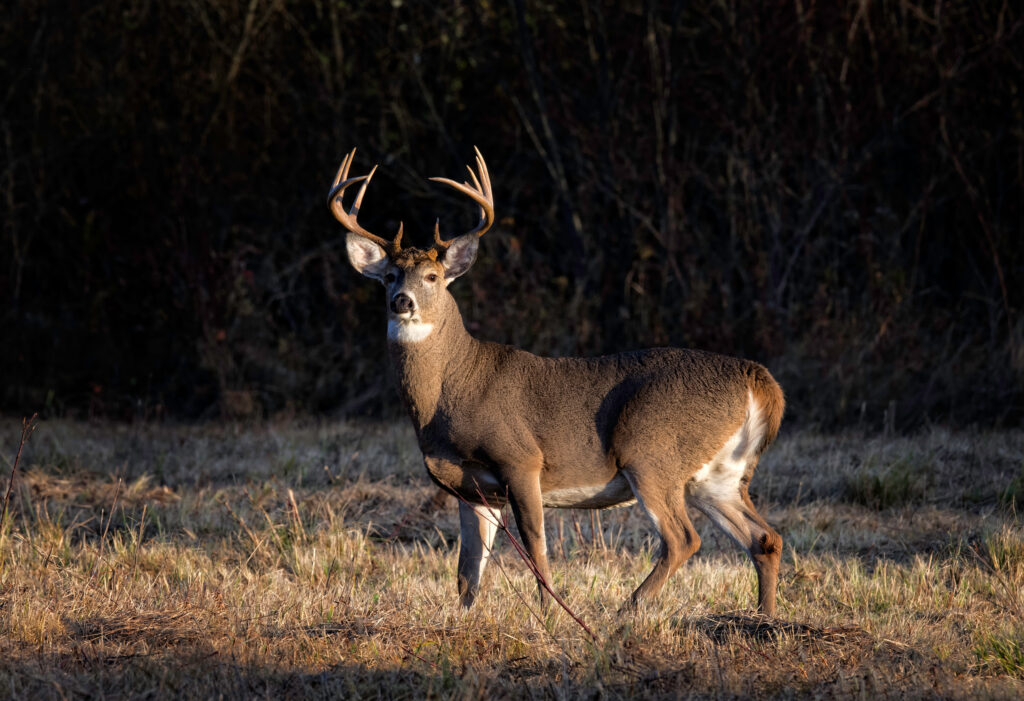
Dean Bouton
Back during the 90s, I had a brief television career with a 30 minute syndicated network show called In the Outdoors. The pressure to produce success for every show was immense! After three years, hunting became more of a chore than fun. Much of that was because the 22 minutes of actual content you saw during a typical show might take a week, two weeks or more to put together. So understand that things don’t always fall into place as they may seem to during an episode of your favorite show. Typically, you don’t get to see all the “fails.”
One thing that did happen with my show was increased opportunity. Outfitters from all over contacted me and asked if I could come and do a show with them – obviously, in return for promotion on the show. For a few years, I got to travel the country sampling some of the best hunting destinations known. Most of the shows you see on TV don’t manage the ground they’re hunting themselves. On the other hand, some of the best do. Again, I’ll use the Drurys as an example – sure, they get presented invites to great destinations, but they earn most of their accolades on their own. They know how to grow big, mature bucks on their own property. Therefore, obviously it can be done.
Therefore, if you’re a weekend warrior who has a few acres in food plots and are able to hunt a few days a month, you can’t compare yourself with experts with vast properties who do it every day.
You Can’t Manage Mother Nature
I have been managing wild whitetail properties for over 35 years. I planted my first food plot specifically for whitetails in 1984. Even back then, I also understood that bucks required age to produce the big antlers I was after. I worked very hard at passing young bucks and getting them the best nutrition possible. It worked! Beautiful 140 to 160-inch racks started showing up in my “grip-n-grin” photos. It was time to step up another rung on the ladder.
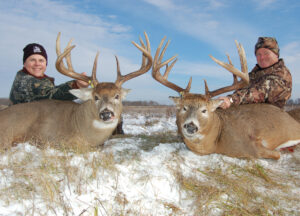
Todd Amenrud
I tried letting those 140-inchers go (which was very difficult for my itchy release finger) in hopes that somehow they would grow bigger, or by not “dropping the string” on the first 140-incher to pass by I would eventually have a chance at a 200-incher. Just so you understand my naivety, this was before trail cameras, so glassing or a sighting while hunting was the only way to know about the herd-makeup. Before trail cameras, I always thought there was a buck with a “rocking chair rack” running around that I just hadn’t seen yet.
It didn’t work! In fact, it still hasn’t. While I’ve killed a few over 170”, they’ve not come off of properties that I’ve managed. Either I traveled to some exceptional whitetail destination or they’ve come off friend’s properties. While I have numerous trail camera photos confirming that bucks over 170 inches were living on my old Ontario property, I never harvested one before I sold it. On my home property in Minnesota that I’ve been managing since 1984, while I have killed 140s and 150s, I’ve only taken one buck over 165 inches. Believe me; it is not for the lack of trying. Because of certain limiting factors, you simply may not be able to get bucks to grow antlers over a certain mark.
After researching record book entries and a number of state harvest archives, considering ALL hunters in one group, your odds of harvesting a buck that scores over 170-inches is less than .05-percent. And that’s after researching only the very best states for producing huge bucks like IA, WI, MN, KY, MO and OH. If you looked at the entire country, I would estimate your odds are less than .01-percent. Granted, our readers tend to be experienced hunters and gamekeepers, so your odds are far better than the average hunter. However, you can see that maybe you should temper your expectations and perhaps use “age” as the biggest determining factor rather than “antler size.”
It wasn’t until the mid-90s when I got more involved in the QDMA and examined more closely “why I liked to hunt big whitetail bucks” that I started to look at things differently. I like to eat venison, but “the need for food” wasn’t why I liked to hunt big bucks. If that were the case, any deer would do. No, I like the challenge.
This brings us to the question, “Is a 5-year old buck that scores 140-inches easier to kill than a 5-year old that scores 180-inches?” Of course not! Sure, I still like to marvel at big antlers, but to me, a 5-year old buck is a trophy regardless of what is growing atop its head.
The main point is; there are some places where you’re simply not going to be able to grow bucks with high-scoring antlers. It doesn’t mean hunting isn’t a challenge or you cannot have fun. We should celebrate “age” at least as much as “antlers.”
Even the Age Rule can be Bent
I have three final things I’d like to share. I didn’t start out killing 5-year old bucks. My first buck was a spike and it was followed up by numerous yearling basket-racks. As a young boy, I was very proud of every one of them. Young hunters watch the same shows that we do and they understand that there are “rules to the game.” We must make sure that we don’t discourage youth or first time hunters. If the bar is so high, why even try?
I can tell you that even this grizzled veteran still gets excited when I draw back on a doe. That rush is one big reason why I hunt – there’s nothing else that I know of that can get me “higher.” That anticipation and exhilaration is something we should try to bring with us on every hunt and something we need to convey to those we teach and mentor. If it makes you happy, that’s what counts!
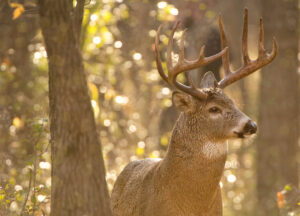
Agnieszka Bacal
I may use my old Ontario property as an example too often, but it fits perfectly for explaining the following. When I first purchased the property in 2009, on over 500 acres, we NEVER saw a buck older than two the first year (even with running 2-dozen trail cameras for months). In addition, we didn’t want to harvest any does because our density was also very low.
How fun is it to go hunting when you know you’re not going to be able to actually hunt for anything? I still like being out there and watching nature’s beauty and all of God’s creatures but remember – one of the biggest reasons I enjoy hunting is the “challenge,” so I needed to create one.
Our first year we never killed anything, but our second year we recognized that it wasn’t going to be much fun unless we put together a plan. Through viewing thousands of trail camera images, we put together a “shooter list.” Our second year, the list only included four deer, but since our food plots were now producing we had seen a few new bucks imprinting on the spot from surrounding areas. It included 2 bucks that we believed were only three years old, one buck that had a huge body but only a six-point rack, and one dry doe that was beyond her fawn-producing years. Well… at least the hunt was on.
I’m not ashamed to admit that I ended up taking one of the 3-year olds and it missed the P&Y minimum. While we were eventually able to grow some amazing bucks on that property, even the “challenge” doesn’t have to be all about the “size of the antlers.”
Finally, a few years ago I had a very nice 3-year old buck that had already reached the 140-inch range. My plan was to hopefully get the buck through two more years. That’s the kind of buck that could possibly make it to the Boone & Crocket threshold. Opening weekend of Minnesota’s firearms season came and I got an excited phone call from one of my neighbors telling me he’d just shot a big one and asking if I’d like to come and see it. I’m sure you can see where this is going… I drove to his place and as I pulled into his driveway I could see the buck hanging on a gambrel in one of his trees. My heart sank.
I felt like laying into him with my “benefits of QDM” speech, but he had an ear-to-ear grin and was so excited he immediately began telling me the story. This was the biggest buck he had ever taken and he was ecstatic. I couldn’t “rain on his parade.” I was in a bit of a funk for a few days, but I couldn’t begrudge his decision? He took the deer legally and he was pleased as punch. It taught me a lesson that maybe I should look at things a little differently. After all, I’m trying for “quality deer management,” not “trophy deer management.”
I love to hunt, being depressed because someone ruined my “gamekeeper dream” wasn’t right. I want to enjoy all the hunting time I have left, so I needed to find a different standard by which to rate my experiences and to keep it challenging at the same time. I believe that antler size may be causing too much heartache.
I don’t want to discourage anyone from trying to produce bucks with the antlers of their dreams – there’s always the chance. But if antlers are all you’re hunting for, you may be doing it for the wrong reason. Much of how you view all of this probably has to do with “why you hunt,” achievement, affiliation, appreciation, etc. The need for food, comradery, to manage the herd, to experience Mother Nature, or the challenge are all legitimate reasons. Regardless, it all boils down to your satisfaction. As long as you abide by the law, it really doesn’t matter the size of the animal or the antlers, the profundity of the experience is what matters. Maybe we should put more emphasis on that and less on antler size.

